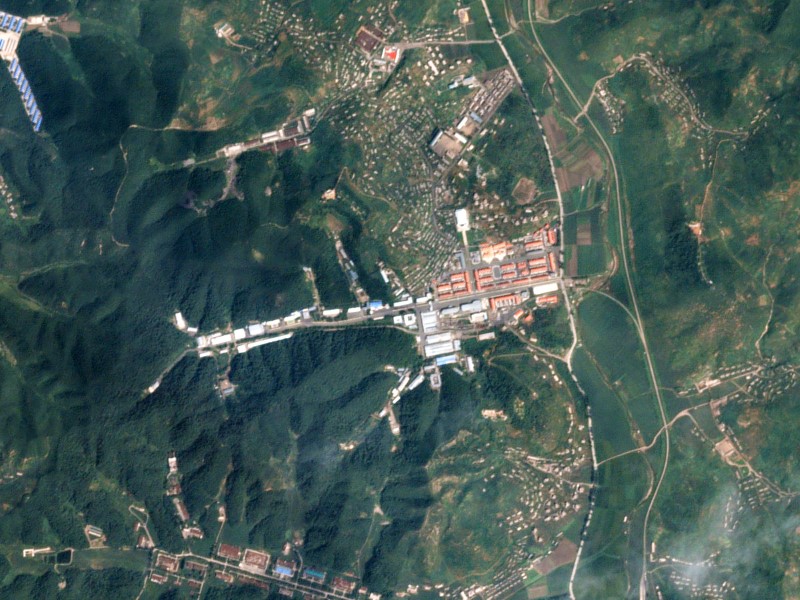By James Pearson (LON:PSON) and Ju-min Park
SEOUL (Reuters) - North Korea has made considerable progress this year on weapons technology, including testing a submarine-launched missile for the first time, but it's still not clear if the isolated nation has developed a nuclear warhead.
It also does not yet have a fleet of submarines that can launch the newly developed missile.
Nevertheless, concerns about the threat posed by North Korea have spiralled since it conducted its fourth nuclear explosion in January and followed it up with a series of missile tests despite severe United Nations sanctions.
Also, three major factories known to produce machine parts for North Korea's sanctioned nuclear and missile programmes have been modernised or expanded, according to analysis of recent satellite imagery seen by Reuters, a further sign of its commitment of scarce resources to weapons.
(Graphic on North Korea's missile-building facilities http://fingfx.thomsonreuters.com/gfx/rngs/NORTH-KOREA-NUCLEAR/010021E53EX/NORTH-KOREA-NUCLEAR.jpg)
"North Korea has dramatically increased the pace of missile testing and invested heavily in modernising its factories that produce them, something we can see in satellite images," said Jeffrey Lewis of the California-based Middlebury Institute of International Studies.
"These investments have paid off with the recent test of a solid-fuelled submarine-launched missile, but North Korea has not yet completed development of a submarine to carry that missile."
In April, a South Korean official said the North had accomplished miniaturisation of a nuclear warhead to mount on a missile, although there was no direct evidence it had done so. The United States has said the North's claim that it had miniaturised a warhead had to be taken as a credible threat.
"I think North Korea is capable of miniaturising nuclear bombs," said Yang Uk, a senior research fellow at the Korea Defence and Security Forum and a policy adviser to the South Korean navy. "But they don't have any standardised warhead yet to put on missiles. They keep gathering data through nuclear tests and working to standardise a warhead."
Experts have predicted that the delivery vehicle for the North's first nuclear warhead would be the medium-range Rodong missile, which can fire a 1 tonne (1,100 lb) warhead up to 2,000 km (1,250 miles).
Despite threats to strike the mainland United States, the North is seen as several years away from building an intercontinental ballistic missile (ICBM) that can carry a nuclear warhead.
EXPANDED PRODUCTION
In the past year, North Korea has boasted of numerous weapons breakthroughs in unprecedented detail.
Although some of it was bluster, international experts have concluded North Korea's missiles have flown higher and for longer than previously, indicating progress in the country's banned missile programme.
In June, after repeated failures, it successfully launched an intermediate-range missile, which can fly up to 3,500 km (2,100 miles).
Analysis of satellite images shows that the North has recently expanded factories known to contribute to its nuclear and missile programmes.
An Aug 22 image of a sprawling plant in a rural area 60 km (37 miles) north of Pyongyang appears to show several new structures, extensive refurbishment of existing buildings and a new entrance to a probable underground facility, according to data from satellite imagery provider Planet that was analysed by Lewis.
The January 18 General Machine Plant has long been used to produce engines for tanks, missiles and other military vessels, according to experts.
"This represents an enormous investment in North Korea's missile production infrastructure, something that is consistent with the propaganda offensive we have seen and the spike in missile testing," said Lewis.
The Kanggye General Tractor Plant, believed by arms control experts to assemble North Koreans munitions, was also upgraded in the last year, according to imagery analysed by Lewis.
The plant is the country's "main weapons production base," a defector who worked in North Korea's secretive munitions industry told South Korea's Chosun Ilbo newspaper in 2010.
For Pyongyang, however, building a new submarine fleet seems to be a top priority.
A new construction hall has come up at North Korea's Sinpo submarine base on the east coast, according to images collected by Planet.
An image from Aug 10 shows a new structure being built beside a refurbished pier within the base, although it was not clear if the new hall would house a new class of submarine.
Perfecting submarine-launched ballistic missile (SLBM) technology and having a fleet of submarines that could deploy the weapons would raise North Korea's threat to Japan and U.S. interests in the Pacific to a new level, given the ability of submarines to escape a land attack and evade missile defence shields.
Leader Kim Jong Un proclaimed the SLBM test the country's "greatest success" and said North Korea was at the "front-rank of nuclear powers".
Moon Keun-sik, a retired South Korean submarine captain and squadron leader, said North Korea's conventional diesel-powered submarines were a persistent threat despite their age but its SLBM-capable craft could be a game-changer.

"North Korea will be or is already in the process of building a newer, bigger submarine that may happen as early as next year," he said.